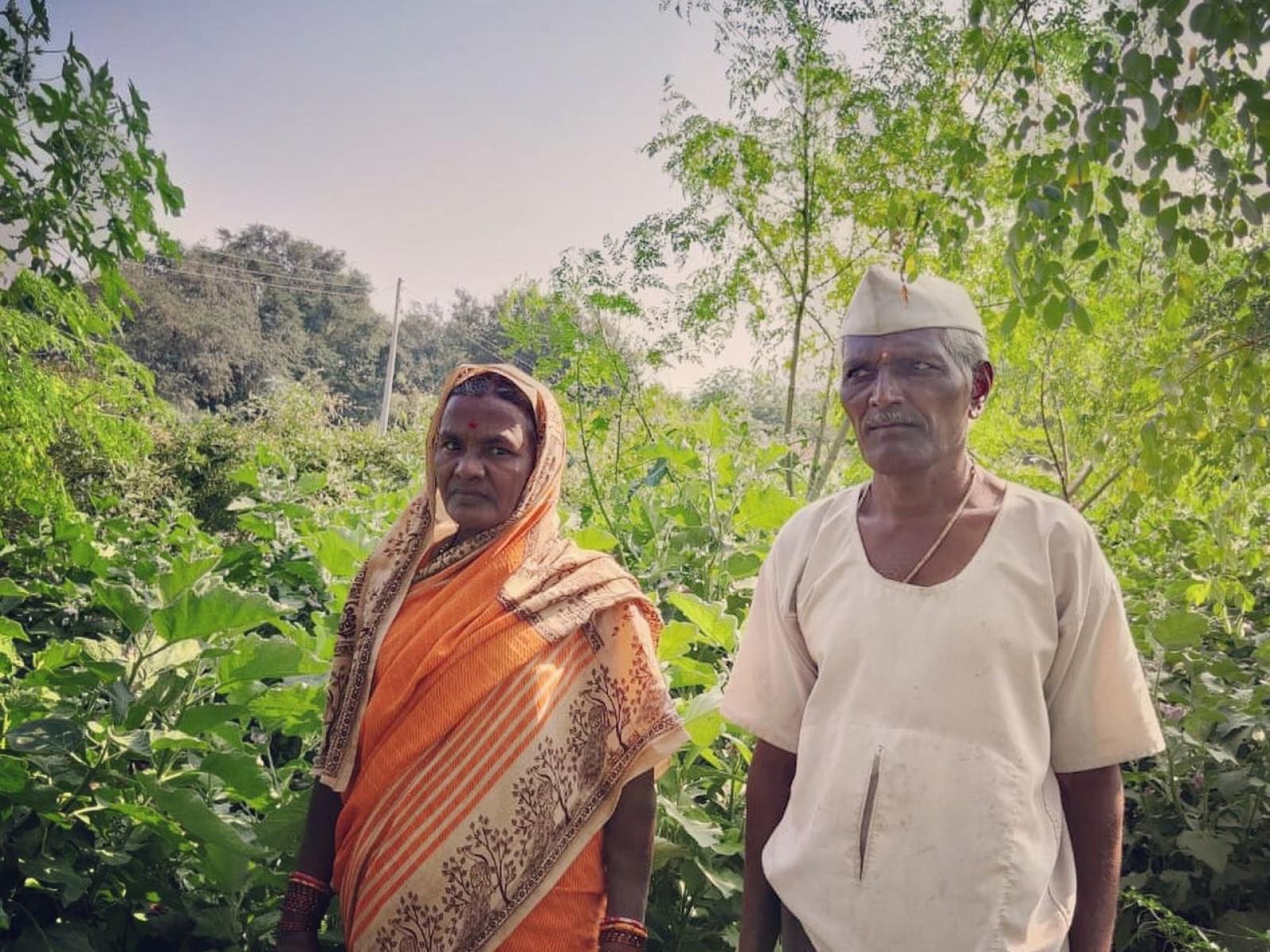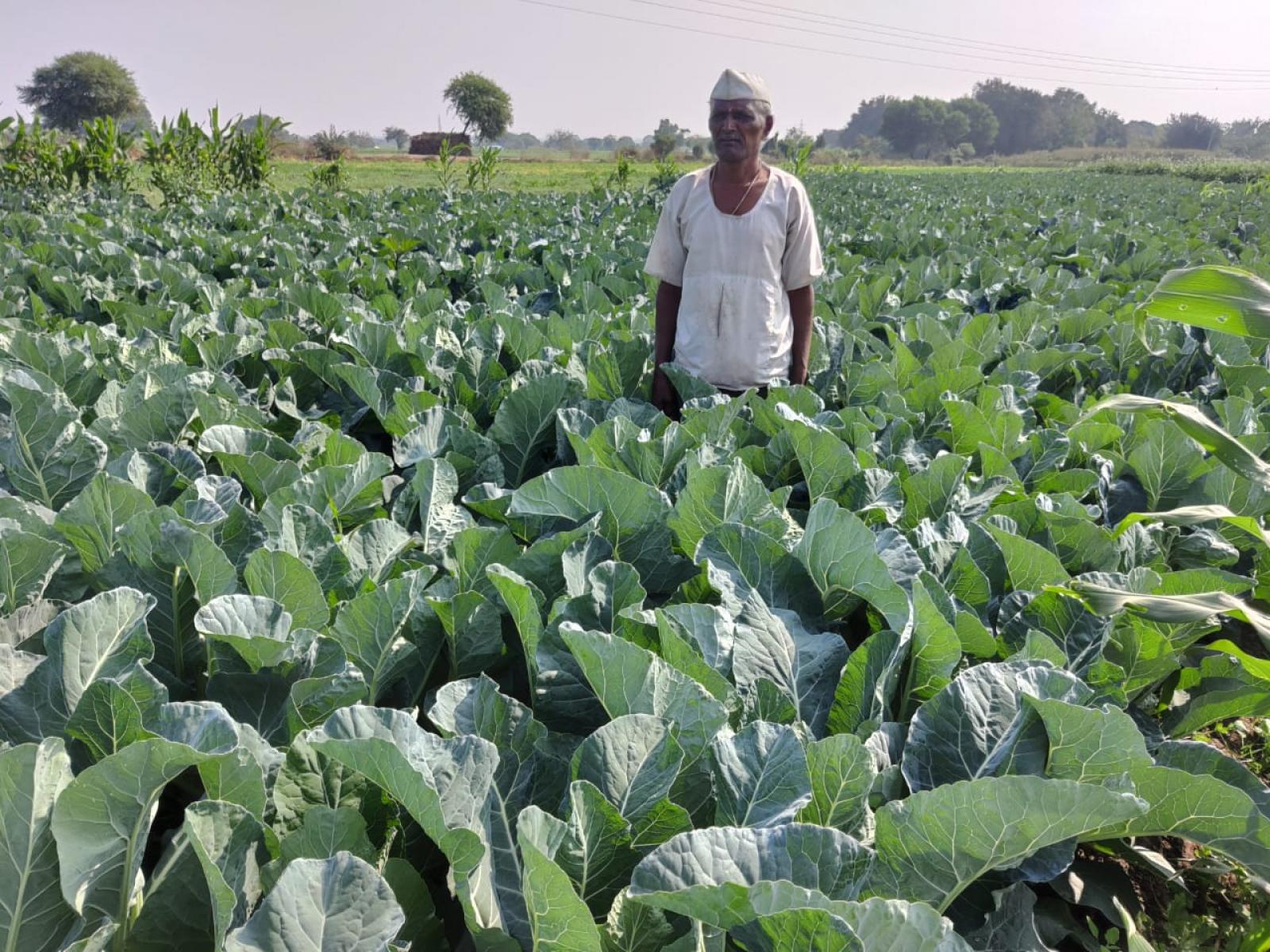An Overview Of Our Solution
OVBI Water and Climate action group is a volunteer-driven accelerator program with the vision to Eliminate Water Poverty in rural India by 2030. We leverage technology and public-private-community partnership to train youth leaders and the community members to learn about watershed management, soil conservation, natural farming, permaculture and agroforestry. Through 1-acre demonstration farms and mass advocacy campaigns, we bring behavioural change among the community to reduce chemical fertilizers and pesticides that pollute groundwater, rivers and lakes. In Latur, Maharashtra, India, thousands of farmers have an increased income of up to 10x by adopting natural farming and agroforestry, reducing the water and soil pollution in the region of 2.4 MM people.
- Population Impacted: 2,400,000
- Continent: Asia
Nombre
Apellidos
Tipo de Organización
Correo electrónico
Análisis de Contexto
Latur, located in the Marathwada region of Maharashtra, has a total population of 2.4 million primarily dependent on agriculture and related activities. The area depends on water from the Manjara River, which has suffered from environmental degradation and silting over the last few decades. The prolonged drought in the region and over-exploitation of water for cash crops like sugarcane led the river to dry up in 2016, forcing the population to buy water through trains and tankers. Overuse of chemical fertilizers has led to the collapse of biodiversity which has polluted the water, impacting the entire ecosystem and the microorganisms critical for water and soil sustainability. Chemical-based agriculture costs much more, and the output is not economically sustainable, because, over time, the land has been left infertile, with much-reduced outputs. This trend has impacted the farmers' food security and livelihoods, causing massive distress in the community.
Describa la solución técnica que usted esperaba ser adoptada por su audiencia meta.
We advocate for India’s farmers and their communities to improve their practices to maintain water quality for irrigation and plant health in three ways:
1. De-silting the river and recharging the shallow groundwater aquifers (up to 100 ft deep) increases the land's freshwater storing capacity. Water is then available year-round with no dependence on expensive water tankers.
2. Natural farming reduces the soil's chemical residue, allowing it to become soft and creates a sponge effect to percolate more rainwater into the ground.
3. Permaculture and agroforestry create natural ecosystems to keep the soil moist, provide nutrients from agro-waste, and increase land productivity throughout the year increasing farmers’ income.
4. Rain Water cycle restoration - With agroforestry and bamboo plantation around water bodies, we expect to minimize heat dome effect and attract clouds back again to restore rain water cycle.
Describa su intervención para cambiar el comportamiento de su audiencia meta relevante a su solución.
Social Influence + Information
- No farmer will change the behaviour if there is no economic gain from the behaviour change. Farmers adopt chemical farming as they come to believe that it will increase yield. By creating demonstration farms, we are showing them zero-cost alternatives that result in massive increases in yield. Once the farmers have the availability of information and can see other farmers adopting natural farming practices, then they are influenced to change their methods.
Choice Architecture + Material Incentives + Emotional Appeal
- Once farmers see other farmers adopting natural farming with material support to get saplings, training and on-going trouble-shooting, they are incentivised to make the choice. When they see other farmers increasing their incomes and providing better for their families, they have a natural inclination to seek change. Additionally, through social media outreach, demonstration plots, and storytelling (live and video) we seek to appeal to the emotions. Each form out outreach links organic farming to better outcomes for the next generation and community at large.
Palancas de cambio de comportamiento utilizadas
Si es necesario, por favor explique el tipo de intervención en mayor detalle
We have to illustrate economic benefit while making the right choices to the farmers:
- Increasing water availability which requires them to make a choice if they can sustain with the status quo which includes - unpredictable rain patterns, prolonged droughts, dependence on buying from water tankers, heavy debts for input costs for farming through chemicals, pesticides, seeds. On the long run, each farmer understands that they are depleting the quality of soil and produce
- Making choices about cash-crops for income vs. multi-cropping model that ensures water resilience and ability to get various crops and fruits throughout the year that ensures sustained income.
- Our training and demonstration farms provide information, social influence and material incentives for them to make sustainable choices for their well-being.
Describa la implementación de su estrategia y solución.
- Watershed Management
- Action plans and watershed planning with the help of geoscientists to ensure shallow aquifers are recharged and water extraction stays above 100ft. Below ground and the water quality is > 6.5 for ph levels
- Drainage lines marking
- Compartment bunding
- Continuous contour trench (CCT)
- De-silting by deepening & widening
- Gabion structures
- Recharge bore wells
- Recharge pits
- Contour bunding
- Influence farmers to stop cash-crops that take up more water and depletes the water, dropping the water tables
- Large scale advocacy campaigns with attendance of 2000+ people
- Awareness campaigns of the chemical pollution in the water and chemical farming and its adverse effects
- Introduction of benefits of natural farming, multi-crop farming and agro-forestry
- Recently started You-Tube channel during the time of COVID to share the message via video - with 19k+ Subscribers in one year. https://www.youtube.com/channel/UCd_SsOO-u4km4mtWuEVrtQw
- Educate and train farmers in natural farming
- Demo farm tours with input cost as low as none using organic pesticides, fertilizers, native seed variety and multi-layer farming models
- Giving out saplings during training sessions
- Ongoing training, support, farm visits to review progress and outcomes of the interventions
- Provide market linkage and networks for selling their produce
- Started brand Anna Daatta to sell organic seeds, and produce from 250 farmers
Motivation - 2x - 20x income the only motivator with a short-term revenue of Rs. 1-3 lakh from an acre and Rs. 10 lakh on long term vs. Rs. 40,000 with chemical farming and cash-intensive crops.
Obstacles - Low-risk appetite. Unless they see with their own eyes they are not willing to adopt. Assuring mentorship and being available to answer their questions and guide them.
Describa quién lidera la implementación de su solución.
- Mahadev Gomare - Led the water revolution in Latur
- Trained over 30,000 farmers
- 5000 borewell recharge in semi-urban and rural areas
- 10 million cubic meters desilting
- Water interventions in 100 villages in Latur district
- Demo farms in 40-45 villages of Latur
- Piloted an organic produce marketing firm where 250 organic farmers supported through their brand “Anna Daata”
- Other youth leaders trained and operating with Mahadev Gomera
- Rohit Sarvade - under 25
- Krishna Narvade - under 25
- Balaji Sadunke - under 25
- Prashant Boble - 30 years
- Mangala Pandge - Women leader influencing other women farmers through her farm - video included
- Ambadas Maruti Waghmare from Gangapur in Maharashtra is now making INR 3 lacs/year from 1/2 acre farm - Marginal farmer with 0.5-2 acre landholding, see pictures
- Dr. Pethkhar - Geoscientist supporting with action plans for Maharashtra
Incluya algunos de los actores clave con los que colaboró durante el desarrollo e implementación de su proyecto.
Key Partners
- Art of Living Foundation - providing leadership and capacity building training in watershed management, natural farming, soil conservation, permaculture and agroforestry through its Youth Leadership Training Program
- IAHV - Administrative, Operational, Fundraising, Reporting and Strategic Alliance partner in India
- Overseas Volunteer for a Better India - Accelerator Partners investing in execution and project reporting technologies
Government of Maharashtra
- Jal Yukta Shivar Scheme provided employment and cash incentives for water intervention projects
CSR Funds from
- Hans Foundation - Watershed development, social forestry, agroforestry, organic farming
- Volkswagen - Watershed development, social forestry, agroforestry, organic farming
- Altas Corp co - Watershed development, social forestry, agroforestry, organic farming
- Cybage - Manjra River Rejuvenation
- Just Dial - Manjra River Rejuvenation
- Kishore Musale Charitable Trust - Manjra River Rejuvenation
¿Quién adopto los comportamientos deseados y en qué grado? Por favor incluya evidencia recolectada demostrando el cambio
Marginal farmers with land holdings 0.5-2 acres, for whom chemical farming is no longer viable due to large input costs, were able to adopt the change to organic farming. Success is measured by the number of farmers who switched at least 0.5 acres to 100% organic farming.
10,000 farmers in Latur region have switched 0.5 acres or more to 100% organic farming
¿Qué impacto tuvo sobre los niveles de contaminación del agua? Por favor sea específico e incluya las metodologías usadas
- Basic measure is Ph of water. We found that after our intervention the ph rises to 6.5.
- Prior to that it typically is around Ph = 5
- Working on getting more chemical residue studies done
¿Cuál ha sido el impacto de su solución en los desafíos de equidad?
- Due to the feminization of agriculture in India, it is mostly women who are involved in farming activities, and have seen a 2x-20x increase in incomes, received awards, and credit for their work. Mangala Padge received many awards in the last couple of years with her success story which has inspired other women farmers.
- Due to awareness, education and opportunities, now women have been provided credit for their work and have been included in the case-studies. Prior to the projects, while women did most of the work, men would take the credit as the land ownership was usually in his name and bank accounts were managed by them. Due to changes in government schemes, access to bank accounts and visibility, we are seeing a massive shift especially with our projects that involve women farmers.
- Marginal women farmers (small landholding 0.5 to 2 acres) 2x-20x increase in income
¿Cuáles fueron algunos de los beneficios comunitarios y sociales adicionales?
- Community leadership to train, mobilize and provide ongoing support to the community
- Availability of Clean Water for farming through watershed and water harvesting
- Multi-cropping leading to more produce and income for the farmers and families
- Agro-Forestry - an added source of income throughout the year
- Economic Development at scale when the population in the entire region is trained in these methods
- Women Empowerment as more women farmers are trained to lead other women farmers
¿Cuáles fueron algunos de los beneficios ambientales adicionales?
- Through water harvesting and watershed management training and interventions, the team on the ground have increased the water capacity, improved the green-cover and have been successful in increasing the water tables making fresh unpolluted water available for life on land
- The region is now water resilient, drought-prone with fertile soil and natural green cover increasing the eco and biodiversity of the land
¿Cuáles fueron algunos de los beneficios de desarrollo sostenible?
- Restore fresh-water ecosystems and increase the water-use efficiency by watershed management, natural farming, agroforestry and permaculture agriculture (6, 15)
- Eliminate poverty of agriculture-dependent rural community with the availability of clean water and sustainable farming practices (1, 8, 9)
- Empower women through inclusive training and economic growth (5)
- Improve water availability, soil and green cover restoration and reduce the effects of climate-related disasters (11, 13)
Sostenibilidad: Describa la sostenibilidad económica de su solución.
We leverage public-private-community partnerships as water interventions tend to be expensive and water-shed projects cross geographic and regional borders. We rely on:
- Existing Government Schemes for Water and Climate Change interventions
- Engage private partnerships for seed accelerator funding and technology support
- Leverage CSR funds
Advocacy & Training for behavior change towards organic farming is relatively low and happens through training and word of mouth
Large campaigns cost Rs. 50,000/event
For sustainability of organic farming - connect to the market is also critical where we need to invest more
Retorno de la Inversión: ¿Cuánto costó la implementación de estas actividades?
Watershed - Average government norm is Rs.6000/acre ($80/acre) of Watershed area
Training - Free
Mass Outreach - Rs. 50,000 ($670) with 2.5k people who attend it
Sapling Cost - Rs. 75
With an investment of Rs.10,000 (~$150), a farmer with 1-acre land will reap the benefit of getting a minimum of Rs. 1 lac (Rs.100000 or $1500) per year which means 10x return on investment.
We have a success story of Ambadas Maruti Waghmare from Gangapur in Maharashtra is now making INR 3 lacs ($4000)/year from 1/2 acre farm - see the pictures of the farmer growing organic cauliflower one of the many crops.
¿Como podríamos replicar esta solución de manera exitosa en otro lugar?
Our Track Record (OVBI)
We have done watershed intervention projects in Karnataka, Tamil Nadu, Rajasthan and Maharashtra. In Karnataka, we are partnering with the Government to execute a Pan Karnataka project across 29 districts covering 27000 villages and in Tamil Nadu after a successful project training 40,000 women and employing them at Rs. 256 (~$3.5)/day, we are expanding the project across 10 districts.
Funding required:
Average government norm is Rs.6000/acre ($80/acre) of Watershed area
Total investment need of $100M over the next 10 years for PAN India, which will leverage over $5B in funds from public/private/communities (detailed financial plan available for PAN India plan)
Next steps for 1-3 years:
- Scale across Latur
- Scale across Maharashtra
- Scale across various Agro-Climatic regions in India
- Training Videos - $20k, in collaboration with Art of Living Foundation, IAHV and CSR Funds
- Learning App - $15k
- Reporting App - $15k





